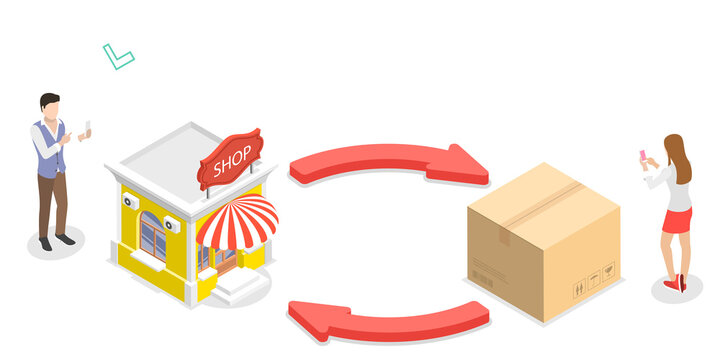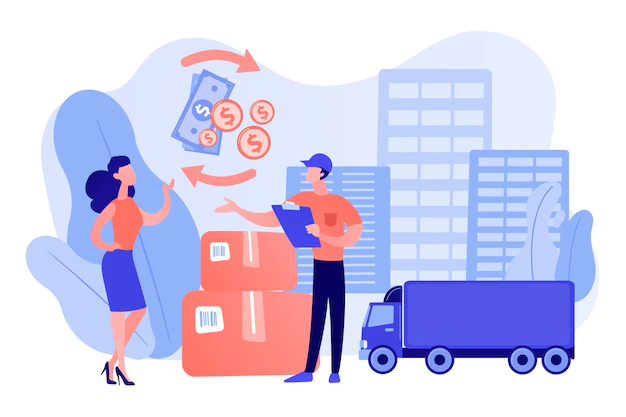
As eCommerce retailers, it is no surprise that returns are a part of the game, especially after the holiday season. In fact, 30% of products ordered online are said to be returned, as compared to the low 8.89% return rate of brick-and-mortar stores.[1] After all, unlike at brick-and-mortar stores, customers cannot try on, feel, or compare nuances of quality/color when purchasing online. However, too many eCommerce returns can be a sign that an analysis of your overall sales and delivery workflows may be needed.
To start, it is important to understand the reasons behind your returns. Without this analysis, it will be nearly impossible to identify underlying problems with your products or processes. By asking and cataloging reasons for returns, you’ll be able to better aspects of your business and even prevent future returns. Sure, some consumers want a “no questions asked” type of return policy, but wherever possible, gathering this data will give your business a leg up in managing eCommerce returns. Let’s take a look at some proven tips to reduce returns, learn from them, and use this information to soften the effects on your business.
1. Upgrade your product descriptions and product images.
One of the most common reasons for eCommerce returns is that the product received does not match the description on the website. One of the biggest mistakes online retailers can make is to use the manufacturer’s product descriptions. Often, they are not meant for consumers and don’t take into consideration the points that will affect shoppers. Well-written product descriptions describe the product so well, that shoppers can almost touch them through the screen. They should include (wherever applicable) clear information about size, material, fit, finish, dimensions, weight, and other important aspects that one would consider when purchasing. In short, descriptions need to appeal to multiple senses even though these senses cannot be used.
As an important exercise, we recommend regularly reviewing customer inquiries and FAQs related to your products. If it comes to light that there is a common question about specific products, ensure that you answer it sufficiently in the product description itself. This will not only reduce eCommerce returns but also reduce the number of questions coming in.
Next, to support the description and stand out to the one sense that shoppers can use online-sight-ensure your product images are aesthetically pleasing, yet honest to the real likeness of your products. Not only should you provide images at different angles, zooms, and settings, but you should also avoid over-editing them as this can lead to inaccurate representation of important aspects like color, for example.
2. Encourage and display product reviews
Reading reviews is a big part of the decision-making process when purchasing online. Many shoppers trust online reviews as much as personal recommendations, and a recent survey report even suggests that reviews influence the decision to buy for over 93% of consumers.[2] The positive impact of reviews is two-fold; 1) they provide social proof and increase levels of trust in consumers towards your brand, especially when you show how well you manage and correct problems highlighted in negative reviews, and 2) they may answer questions about your products that your descriptions have not. The latter, of course, can have a hand in reducing product returns as consumers have gotten a real-life glance into the product and its performance in meeting (or not) buyer expectations. This will help them make a more educated decision as to whether the product is really right for them, allowing you to avoid the returns process altogether. Sometimes a sale lost is more practical than the time and resources spent on managing eCommerce returns.
3. Analyze your checkout options
Once shoppers have reached the checkout screen, do they have the option to verify their order? Can they preview the item right from the cart in a simple fashion? As customers advance in their shopping journey and come back to review an item in the cart, new considerations may have popped into their minds. It is important to allow them to review their chosen items one last time before checking out.
Of course, we live in a time where speed is sought after in many aspects of online shopping – express checkout being one of them. However, if you notice during your analysis of returns that certain products are always sent back if processed through express checkout, consider removing the option when one or more of these items are added to cart. This is sure to ease up the rates of eCommerce returns, as it allows customers to ensure that they are purchasing the right product.
4. Make returns extremely easy
Reading the title of this section, you may be thinking: “What? I thought the whole point was to REDUCE eCommerce returns!” Indeed, however, as we mentioned earlier, returns are inevitable no matter how perfectly you have set up your strategy. At a certain point, you must mitigate the negative effect that returns can have on your bottom line.
Consider that the way you handle eCommerce returns actually affects your level of sales in the first place. With the innate uncertainty of buying online as opposed to in-store, people want a level of reassurance that they can reverse the order without a hassle if the purchase does not go as hoped. Unsurprisingly then, as many as 49% of shoppers check the return policy before making a purchase.[3] This coupled with the fact that 76% of first-time customers who enjoy an easy return experience say they would shop with that retailer again [4], it is quite clear that establishing a flexible return policy has pros that outweigh the cons.
Some ways that online stores have facilitated an easy eCommerce return process is to provide free return shipping, complete with easy-to-print labels. If your online store runs in tandem with your brick-and-mortar store, giving the option to return in-store is well sought-after by shoppers. In fact, despite being offered free shipping, 44% of consumers still prefer to return in-store.[5] Getting shoppers into your physical store, despite it being for a seemingly “negative” reason, gets your target audience to engage and interact with your brand, thereby increasing the chance of further purchases during their visit.
Consumers also love options, so giving them options on how to receive their refund are welcomed. You can offer an in-store credit, gift cards, loyalty points, exchanges, or any other variation that works well with your audience.
5. Average out your eCommerce returns rate by offering personalization options for products
Having the option to personalize a product increases customer satisfaction, and thereby significantly reduces returns. Having the ability to be involved in the creation of a product allows customers to dictate design parameters that exactly fit their desires. When your business can meet each customer’s unique tastes, the need for returning a product diminishes because not only have they been presented with an item they truly want, but it is one that they are emotionally connected to as co-creator too. Of course, ensuring that you use the right type of web2print product personalization software that provides the best user experience to your customers and supports your business strategies is key here.
Final thoughts With these 5 tips and a continuous analysis of your returns landscape will certainly reveal the best approach for your specific business. The most important element is to always be aware of the factors that contribute to the success or shortcomings of certain product sales, and work on rectifying them. One of the remedies may end up being removing certain items from your catalog if their returns do not diminish after assessment and resolution measures. Embrace your data and feedback from your consumers to make decisions that will reduce the impact of eCommerce returns on your store.
